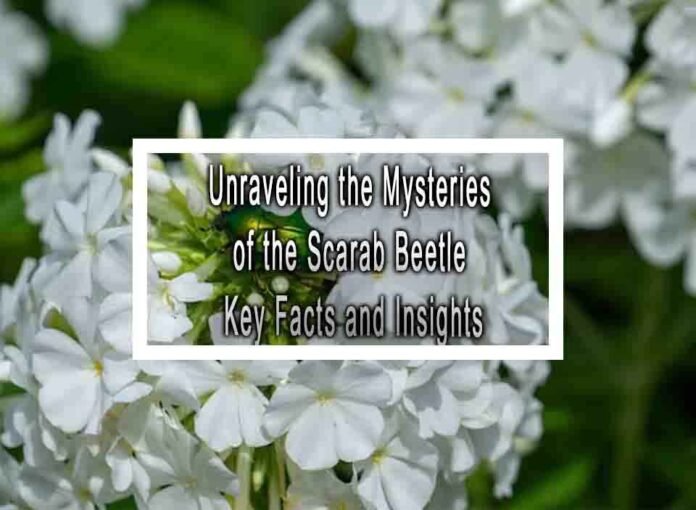The scarab beetle is a fascinating and iconic creature in ancient Egyptian culture and mythology, with a rich history and symbolism. Here are key facts and insights into the mysteries of the scarab beetle:
1. Symbolism:
- Transformation and Rebirth: The scarab beetle symbolizes transformation and rebirth in ancient Egyptian beliefs. It was associated with the concept of regeneration and renewal, particularly the rising sun and the cycle of life.

- Protection: Scarab amulets and artifacts were worn or carried by individuals as protective charms. They were believed to offer protection against evil forces, illness, and misfortune.
- Solar Symbolism: The shape of the scarab beetle, with its rounded body and legs tucked beneath, resembles the sun as it rises over the horizon. This solar symbolism links the scarab to the sun god Ra and his journey across the sky.
2. Mythological Significance:
- Khepri: Khepri, often depicted as a scarab-headed deity, represented the morning sun and the act of creation. Khepri rolled the sun across the sky each day, symbolizing the cycle of life, death, and rebirth.
- Creation Myth: In some versions of the creation myth, it was believed that the world was formed from a giant scarab beetle, emphasizing the beetle’s role as a symbol of creation and renewal.
3. Scarab Artifacts:
- Scarab Amulets: Scarab-shaped amulets and jewelry were commonly worn by the ancient Egyptians. These amulets were often inscribed with protective spells and symbols, and they were placed on mummies to ensure safe passage to the afterlife.
- Seal Impressions: Scarab artifacts were used as seals and amulets to make impressions on clay or wax. They often featured inscriptions or hieroglyphics that conveyed specific messages or blessings.
4. Use in Burial Practices:
- Heart Scarab: Heart scarabs were placed over the heart of the deceased during mummification. They were inscribed with spells from the Book of the Dead to ensure that the heart did not bear witness against the deceased in the afterlife.
- Funerary Jewelry: Scarab amulets and jewelry were commonly placed in tombs and used as protective items for the deceased.
5. Material and Colors:
- Materials: Scarab artifacts were made from various materials, including stone (such as steatite or jasper), faience (a glazed ceramic), and precious metals like gold and silver.
- Colors: The color of the scarab had specific significance. Green and blue scarabs represented rebirth and transformation, while red scarabs symbolized the setting sun and the cycle of death.
6. Modern Interest:
- Collectibles: Scarab artifacts and amulets continue to be popular among collectors and enthusiasts of ancient Egyptian art and culture.
- Symbolic Meanings: The scarab beetle’s symbolism of transformation and renewal resonates with many people today and is sometimes used as a symbol of personal growth and change.
In summary, the scarab beetle is a powerful and enduring symbol of transformation, protection, and renewal in ancient Egyptian culture and mythology. Its significance is deeply intertwined with the cycle of life, death, and rebirth, making it a timeless emblem of the human journey through time and existence.











